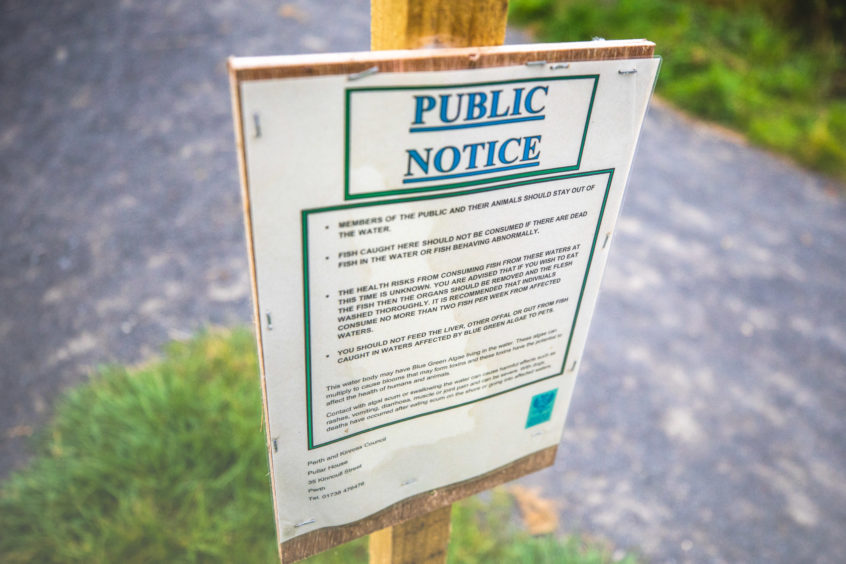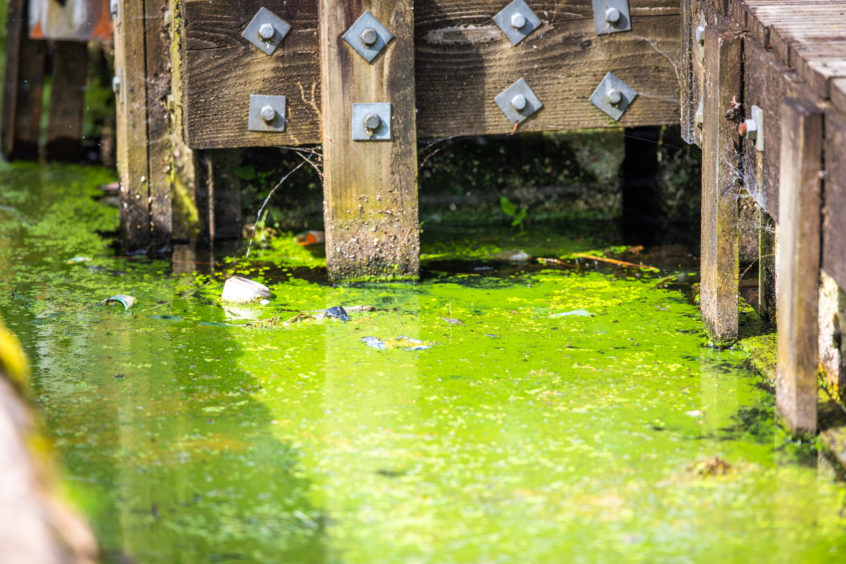Warnings have been issued to visitors to Loch Leven after the water turned bright green due to algae bloom.
The bloom was discovered when the Centre for Ecology and Hydrology (CEH), based at Edinburgh University, carried out routine water sampling.
The Scottish Environment Protection Agency (Sepa) alerted the council of the issue. In response, they put signage around the loch.
Anglers have also cautioned to eat no more than two fish per week from the loch’s waters due to the algae that has formed on its surface.
In addition, dog owners have been advised to be vigilant in response to the rising levels of scum, which is dangerous to people and animals.
A spokeswoman for Perth and Kinross council said: “Blue-green algae have the potential to cause short and long-term adverse health problems.
“NHS Tayside should be contacted directly for information for advice on the human health aspects of blue-green algae detailed within this plan.”
Other visitors to the loch have reported a strong “rotting” smell in the area.
Local Authorities with recreational bodies of water in the Tayside area follow the Blue-Green Algae Monitoring and Action Plan for Tayside NHS Board Area.
The council spokeswoman said: “The content of the signs is taken from this action plan which draws on current Scottish Government guidance for the safe practice in managing recreational waters.”
One local resident became concerned when he saw a dog stained green by the algae and said he wanted to ensure the loch’s hundreds of visitors, as well as residents of nearby Kinross.
He said: “I never thought anything of it until I was having a cycle around it at the weekend and saw droves of families with animals in the loch.
“There was actually a wee tan-coloured dog that came out green. I don’t think families are fully aware of the danger of it to health.”
Algal blooms are prevalent in hot weather and can lead to a range of symptoms for animals if ingested, even in small amounts.
These include vomiting, breathing issues and seizures. Untreated exposure to the algae could be fatal for animals.
Algae can also pose a risk to humans, as well as animals. NHS Tayside advises the public, especially those undertaking water-sports, to be alert in regards to the algae.
Consultant in Public Health Medicine for NHS Tayside, Dr Jackie Hyland said: “We routinely monitor levels of blue-green algae over the warmer months because of the potential health risk to people and to animals.
“[People] who come into contact with the algal scum or who accidentally swallow affected water can suffer from complaints such as skin rashes, eye irritation, vomiting, diarrhoea, or pains in muscles and joints.
“These symptoms are usually mild, but in some cases, can be severe.”
However, NHS Tayside has confirmed that no-one has reported health concerns due to the recent algae at Loch Leven.
Loch Leven is susceptible to algal problems due to its lack of depth and because the area of the loch is relatively large in comparison with the area of its catchment, so the rate at which the loch is flushed by rainfall is very slow.
Heavy rain also washes nutrients from farmland and sewers, which prompts algal growth.











